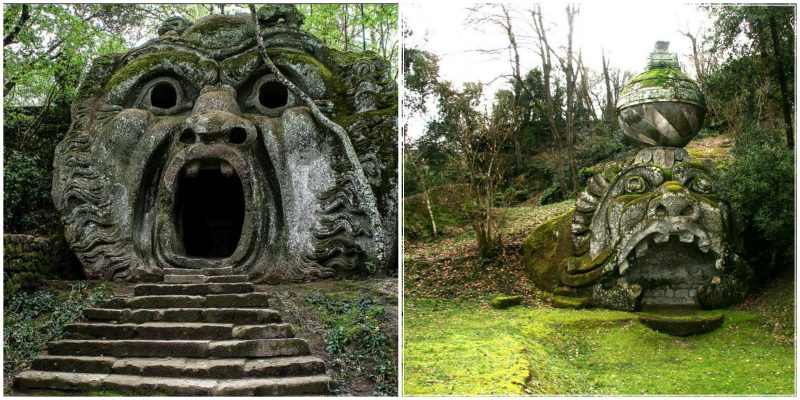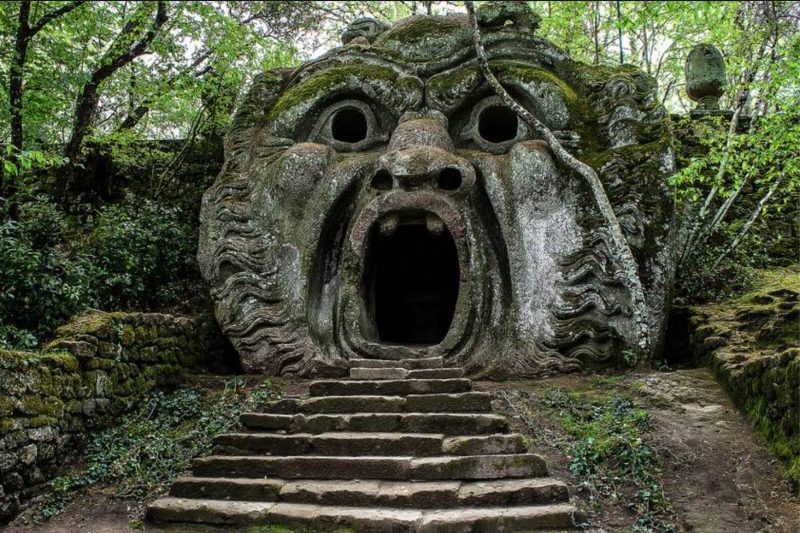The Sacro Bosco (“Sacred Grove”) or commonly dubbed Park of the Monsters (Parco dei Mostri) in the Garden of Bomarzo erected as a result of grieving melancholia commissioned by Prince Pier Franceso Orsini in 1552.
Built during the Italian Renaissance, The Park of the monsters is the bizarre heaven of Manneristic design which can be understood as the surrealism of the 16 Century.
The park’s name stems from the many larger-than-life sculptures, some sculpted in the bedrock, which populate this predominantly barren landscape. Its commissioner, The Prince of Bombarzo, Pier Orsini for years had been struggling through a unmerciful war, had been held for ransom, and when finally had to witness the death of his beloved wife, Giulia Farnese, racked with sorrow, had found his escape in the lush garden.


Orsini, who was known as a good patron of the arts, hired the widely respected architect Pirro Ligorio to help him build a park that will both honor his late wife and serve as an expression of his grief.
The park of Bomarzo was intended not to please, but to astonish, and like many Mannerist works of art, its symbolism is arcane: examples are a large sculpture of one of Hannibal’s war elephants, which mangles a Roman legionary, or the statue of Ceres lounging on the bare ground, with a vase of verdure perched on her head.The many monstrous statues appear to be unconnected to any rational plan and appear to have been strewn almost randomly about the area, sol per sfogare il Core (“just to set the heart free”) as one inscription in the obelisks says.
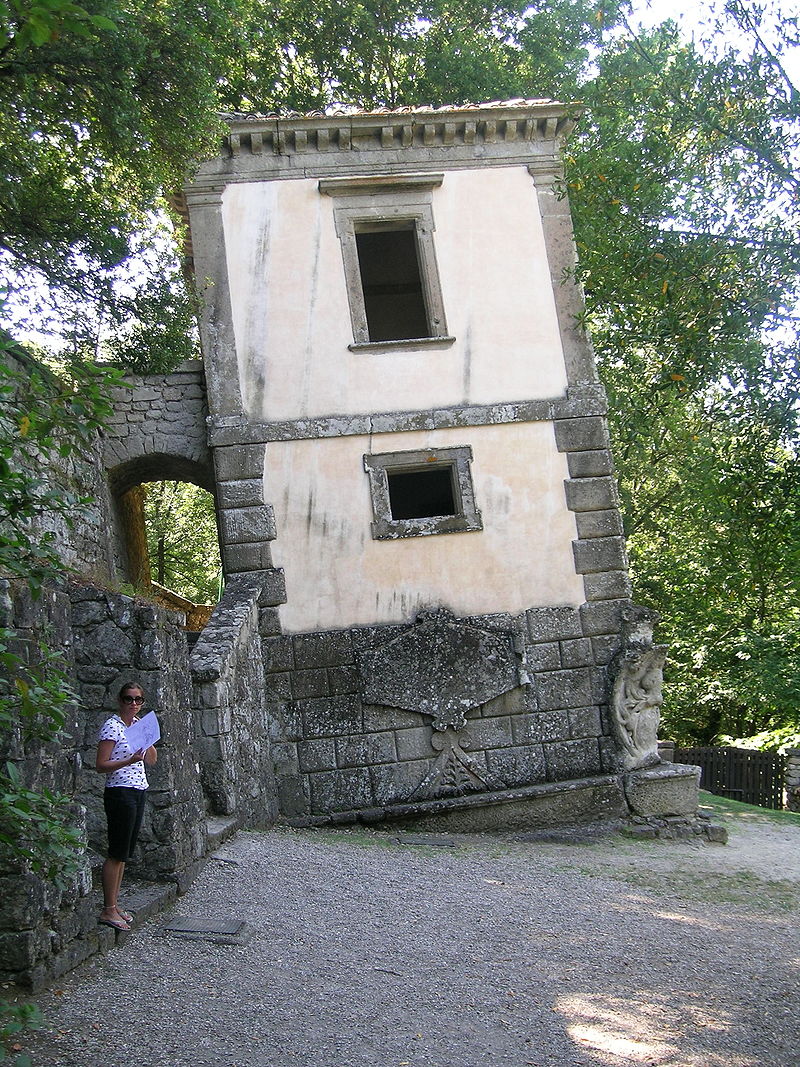
The reason for the layout and the rather obscure design of the garden is largely unknown: perhaps they were meant as a foil to the perfect symmetry and layout of the great Renaissance gardens nearby at Villa Farnese and Villa Lante. Next to a formal exedra is a tilting watchtower like casina, the so-called Casa Pendente (“Leaning House”).
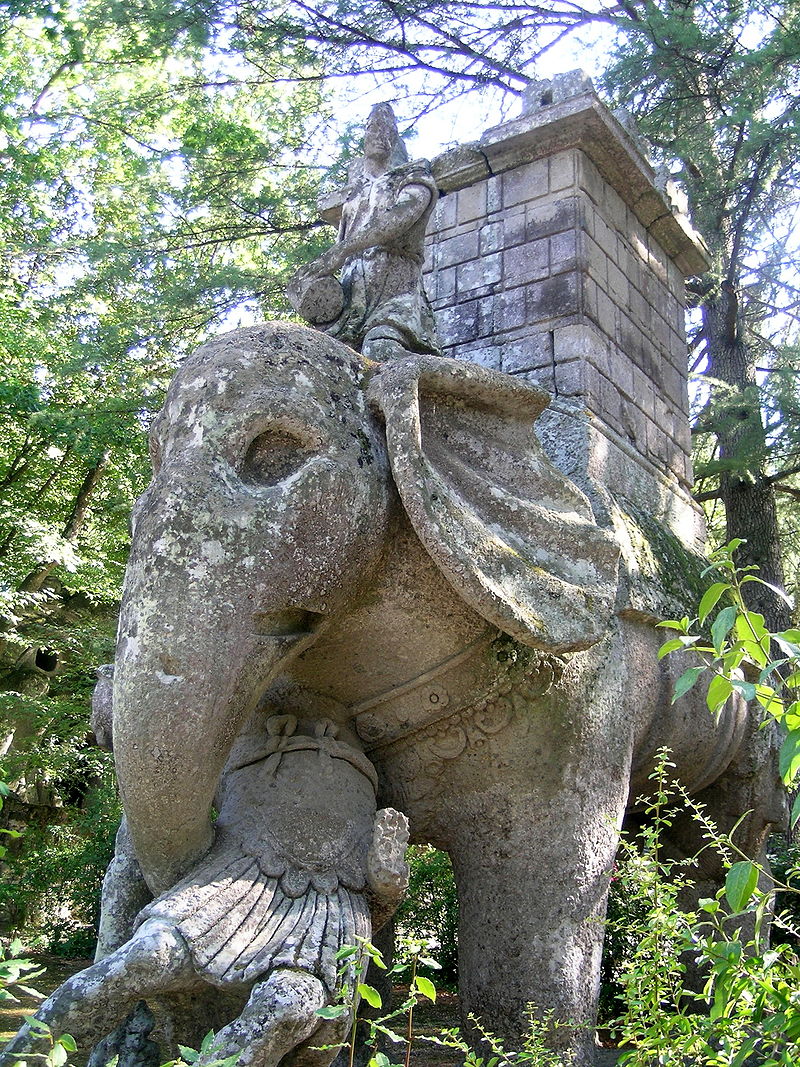

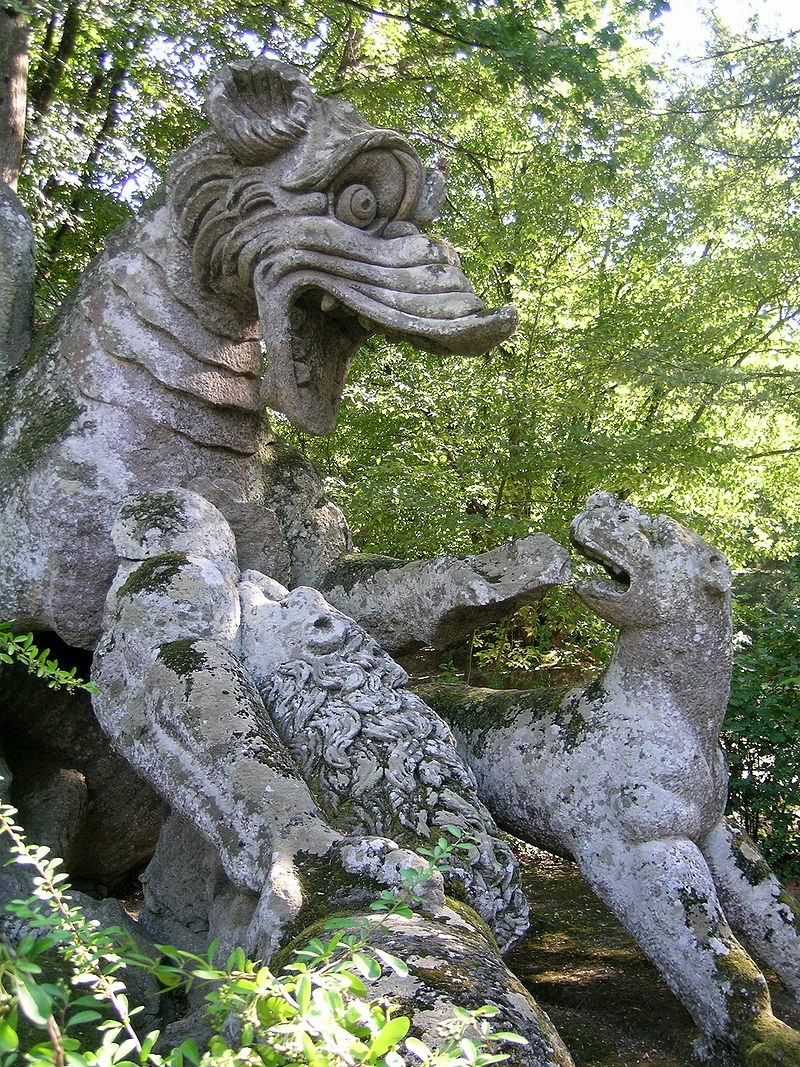
The idiosyncratic Park of the monsters was not only a place where Orsini found peace and surrounded himself with literates and artists, deeply devoted to an Epicurean style of life, but centuries later the odd marvel had inspired big surreal artists. Parco dei Mostri was one of the favorite places that appealed to Salvador Dali. Here, the surrealism-mastermind found inspiration and used the place as a location for a short movie he shot. The odd sculptures of the park inspired Dali’s 1946 painting The Temptation of Saint Anthony. Jean Cocteau was also an often visitor to the park.
The flagship sculpture in the 16th-century park is the huge screaming mouth (known as “the mouth of hell”), inside which, on the tongue, stands a picnic table and enough seating for a small group to have lunch.
During the nineteenth century, shadowed by the new glory of Neoclassical parks and sculptures, the Manneristic marvel fell deep into oblivion and became overgrown and neglected. What was once an artistic oasis, has become a decaying park swallowed by nature.
However, in the 1970s, a program of restoration was implemented by the Bettini family, and today the garden, which remains private property, is a major tourist attraction.


